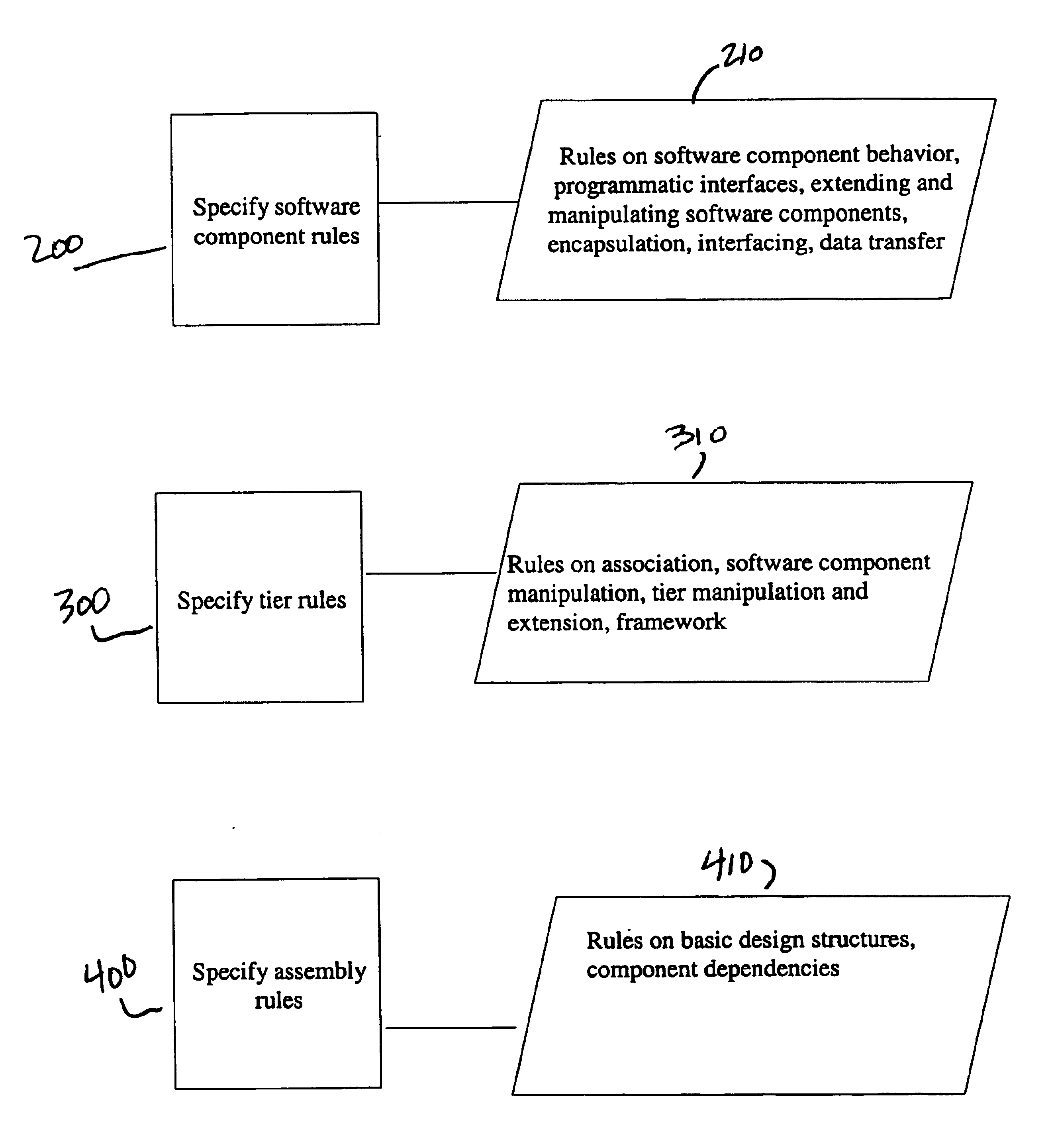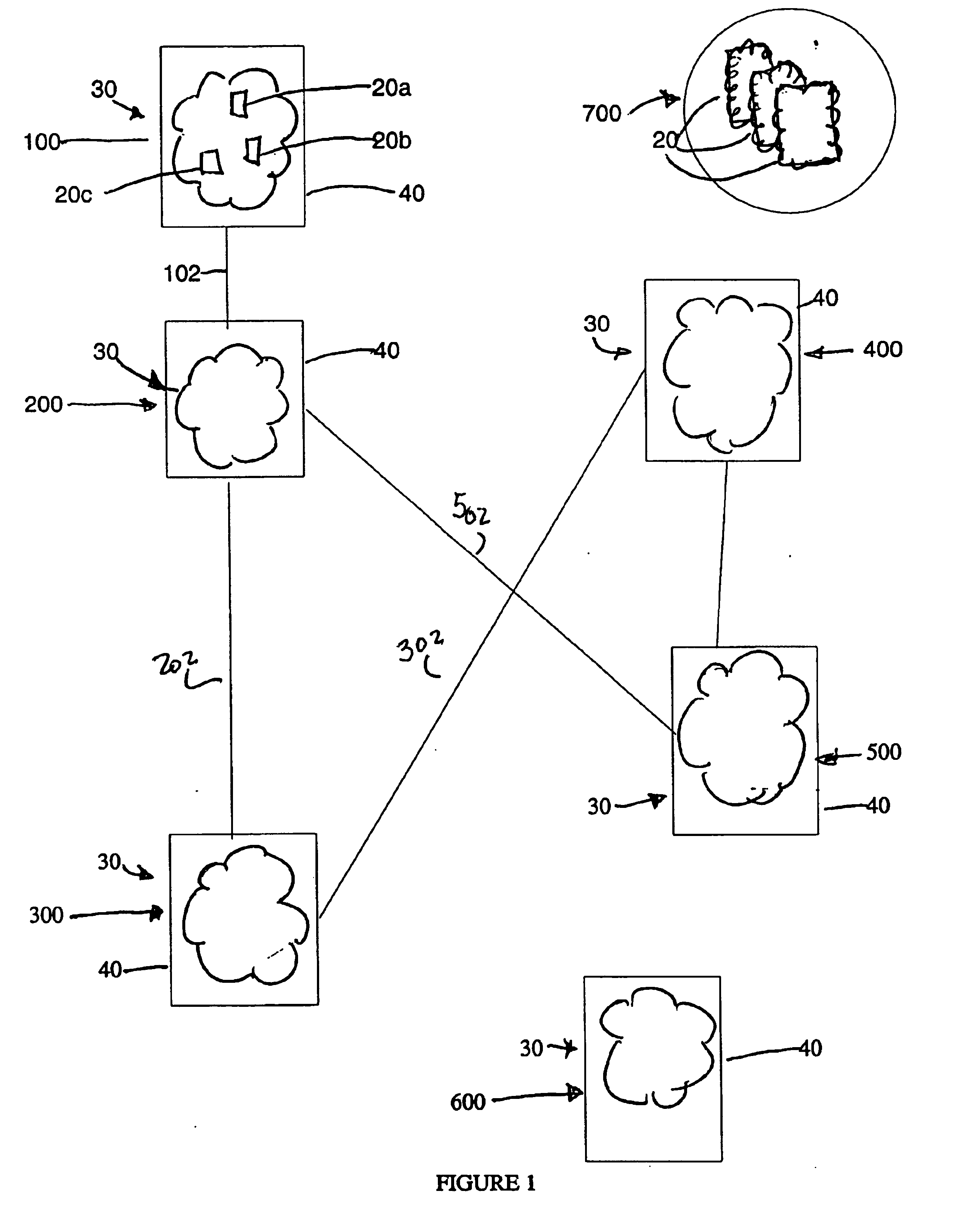Method of and system for designing an N-tier software architecture for use in generating software components
a software architecture and software component technology, applied in software design, instruments, computing, etc., can solve the problems of difficult reuse of separate functional parts of the program, difficult reuse of these components or their various functions, and difficult maintenance of applications
- Summary
- Abstract
- Description
- Claims
- Application Information
AI Technical Summary
Benefits of technology
Problems solved by technology
Method used
Image
Examples
Embodiment Construction
Referring generally to FIG. 1, the present invention comprises a methodology that applies an engineering and manufacturing oriented approach to software production based on a well-defined architecture. As used herein, “manufacturing” implies a method analogous to a software factory. Using the present invention methodology, software application development can proceed as if it was a software manufacturing process with an assembly line capable of assembling all types of intellectual property quickly and at the lowest cost
The present invention uses an “N-tier architecture” paradigm. In an N-tier architecture, all functionality is broken down at the system level into logical chunks or tiers 30 that perform a well-defined business function. In the present invention's N-tier architecture there is no limit to the number of tiers 30.
The present invention's N-tier software design architecture is employed to develop software components 20 (shown in FIG. 1 as 20a, 20b, and 20c). As those of or...
PUM
 Login to View More
Login to View More Abstract
Description
Claims
Application Information
 Login to View More
Login to View More - R&D
- Intellectual Property
- Life Sciences
- Materials
- Tech Scout
- Unparalleled Data Quality
- Higher Quality Content
- 60% Fewer Hallucinations
Browse by: Latest US Patents, China's latest patents, Technical Efficacy Thesaurus, Application Domain, Technology Topic, Popular Technical Reports.
© 2025 PatSnap. All rights reserved.Legal|Privacy policy|Modern Slavery Act Transparency Statement|Sitemap|About US| Contact US: help@patsnap.com



